I need only the diagonal elements from a matrix multiplication:
 ,
,
in R. As Z is huge I want to avoid the full out multiplication....
Z <- matrix(c(1,1,1,2,3,4), ncol = 2)
Z
# [,1] [,2]
#[1,] 1 2
#[2,] 1 3
#[3,] 1 4
X <- matrix(c(10,-5,-5,20), ncol = 2)
X
# [,1] [,2]
#[1,] 10 -5
#[2,] -5 20
Z %*% D %*% t(Z)
# [,1] [,2] [,3]
#[1,] 70 105 140
#[2,] 105 160 215
#[3,] 140 215 290
diag(Z %*% D %*% t(Z))
#[1] 70 160 290
X is always a small square matrix (2x2 , 3x3 or 4x4), where Z will have the number of columns equal to the dimension of X. Is there a function available to do this?